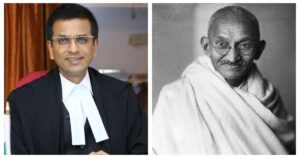“Would not change even a comma,” responded Dr Babasaheb Ambedkar to the organizers of a so-called anti-caste platform Jat-Pat Todak Mandal (Society For The Abolition Of Caste System) in December 1935.
Dr Ambedkar was invited by the secretary of Jat-Pat Todak Mandal in Lahore to deliver a speech on casteism in 1936. The organizers reviewed the draft of the speech and expressed unhappiness over a few aspects of casteism that had attacked the conventional societal norms and orthodoxy of Hindu society. The event then uninvited Dr Ambedkar because the organizers could not digest the facts.
Instead, in 1936 Dr Ambedkar self-published 1,500 copies of the speech that came to be called Annihilation of Caste. The book, in today’s epoch, continues to trigger the orthodox minds and that’s why it is, unfortunately, rarely discoursed on in the social sphere and in academic spaces.
I am a professor based in Mumbai and let me tell you that it takes a lot of courage and boldness to scorn the idea of casteism in one’s social and professional life[despite the brouhaha over the volume of literates produced in our nation]. Having received “feedback” from the ‘senior’ authorities of a few institutes that I have worked with (in the past), I continue to stay ostracized for endeavouring to lecture and blog against casteism. I will continue to do so.
I believe it is completely important to include Annihilation of Caste and discussions around it from secondary-level schooling so that we beget a generation of critical thinkers who aren’t fed ideas of racism, patriarchy, and homophobia in any form in today’s ‘new’ India.
Parents, in my view, are not going to verily tell their kids about the horrors of casteism, especially those from the privileged class. In fact, I feel that Indian parents are widely known for (mis)guiding their offspring on topics like sexuality, caste, class, identity and individuality, due to their social anxieties and conscious ignorance associated with ‘parenting’.
There is a reason why we see a systematic increment in the cases of honour killing and endogamy (arranged marriages). This is because Annihilation of Caste has not been popularly socialized in India.
Even the debates on casteism are rarely to be found in mainstream TV journalism, print media and radio. Thus the social consciousness on smashing casteism is lowkey. Inter-dining or reservation alone would not downsize casteism as much as many people ‘assume’ it to be. It’s mere tokenism, highly used to score political points over one another. The ground reality is completely different.
There is a dire need to ‘think out of the box’ in undoing casteism and freeing people from the age-old matrix of slavery. Annihilation of Caste was a radical work for its time, and it continues to be. The book’s theme revolves around the effect of casteism (as it matters for ‘untouchables’ like Dr Ambedkar himself.)
The caste system is a conventional, misogynic and a very rigid social order that discriminates and exploits people, except the upper-caste (Brahmins), on the basis of birth, colour, gender, identity and community.
It is proven that casteism ‘lynches’ the very scope of social mobility, cultural emancipation and freedom of individuality. Dr Ambedkar highlights one particular case, where Hindus demanded that Balais (‘untouchables’) follow the rules listed below:
- Balais must not wear gold-lace-bordered pugrees (turbans). They must not wear dhotis ( a loose piece of clothing wrapped around the lower half of the body) with coloured or fancy borders. They must convey intimation [information] of the death of any Hindu to relatives of the deceased—no matter how far away these relatives may be living.
- In all Hindu marriages, Balais must play music before the processions and during the marriage. Balai women must not wear gold or silver ornaments; they must not wear fancy gowns or jackets. Balai women must attend all cases of confinement [childbirth] of Hindu women. Balais must render services without demanding remuneration and must accept whatever a Hindu is pleased to give.
- If the Balais do not agree to abide by these terms, they must clear out of the villages.
Having established this as a fact of the Dalit life, Dr Ambedkar asks a series of rhetorical questions to political-minded Hindus, namely:
- Are you fit for political power even though you do not allow a large class of your own countrymen like the untouchables to use public schools? Are you fit for political power even though the class of your own countrymen like the untouchables to use public schools?
- Are you fit for political power even though you do not allow them the use of public wells? Are you fit for political power even though you do not allow them the use of public streets?
- Are you fit for political power even though you do not allow them to wear what apparel or ornaments they like? Are you fit for political power even though you do not allow them to eat any food they like?
The impact and outcome of this are to comprehend and thrust the Hindu consciousness, to divulge social and economic inequality. This question, or the social question, of political reform is coupled with economic reform, thinking through the characteristics of ‘Indian’ society – from the perspectives of people from Dalit communities. For Dr Ambedkar, or any other intellectual, it is the system of ‘caste’ that prohibits, regulates, exploits prevents, intimidates, scorns and expropriates the real progress and that peculiarly includes ‘the ability to form a truly national society’.
It is casteism that prevents a human being from practising humanity with other humans and nevertheless deprives ‘segmented’ individuals in the hierarchy of caste from experiencing empathy and fraternity. Dr Ambedkar’s [ideal] social contract is one of true equality and freedom, an India of genuine and generic liberties at all levels of society.
Schools must include this book in their curriculum, otherwise, schooling would sound like discussing the ecology of forests without trees. The book is a ray of hope and it gives one nerve to think beyond what they perceive. Reading Dr Ambedkar’s work is ‘essential’ as it is a crucial ingredient in the holistic and scholarly development of education, cognition and socialization.
Economics would teach about the science of ‘division of labour’ but Annihilation of Caste alone would teach you ‘division of labourers’ (based on caste in society). Many people limit their understanding of Dr Ambedkar only to the political knowledge of constitution-writing. It is unfortunate that his books on casteism, Buddhism, economics, and more continue to stay unpopular and underestimated.
Doesn’t it seem like a conspiracy to purposely ‘control information’ about his ideas in the academic sphere? Even though there is a political consciousness to his vision and ideas, but little do we review his books publicly. IIT-Madras, JNU, TISS, and few other public universities continue to have social and academic circles discussing Dr Ambedkar and his books, but they are still subjected to ‘spiralling silence’ in the academic space due to [certain] ‘university norms’.
In 2019, while commemorating the 63rd death anniversary of Dr Ambedkar, Chief Minister of Delhi Arvind Kejriwal announced that students of 6th, 7th and 8th grade in the public schools of Delhi will learn about the life and contribution of Dr Ambedkar. But, would that bring sound justice to the noble idea as anticipated?
In 2014, in Madurai, at the SR Government Higher Secondary School, a few teachers were stopped by some casteist students from teaching about Dr Ambedkar. A Dalit boy, studying in the same school, was attacked for objecting the casteist students.
The important question is: “Why are schools shying away from including ‘Annihilation of Caste’ in their curriculum?” Why are the private schools uninterested in making students aware about the horrors caused by casteism in India?
This is not a matter of politicization. This is a matter of socialization. From food consumption to social interaction, from the economic profession to cultural celebrations, casteism has become an omnipotent, omniscient, and omnipresent phenomenon.
I do not mean to say that Annihilation of Caste has to be enforced in every corner but there is a dire need to talk about this book as well as casteism in the academic sphere.
There is a need to talk about this with the intent to smash bigotry, as we have been seeing a systematic drop in the cases of exogamy, egalitarian feelings and social empathy. The changing political and social landscape of contemporary India is a reference to my assertion here.
“Annihilation of Caste has to be read … No Hindu who prizes his faith above life itself can afford to underrate the importance of this indictment.” – Mahatma Gandhi.
(Jaimine Vaishnav is a lecturer based in Mumbai. He is presently completing his Ph.D. Courtesy: Youth Ki Awaaz blog.)




